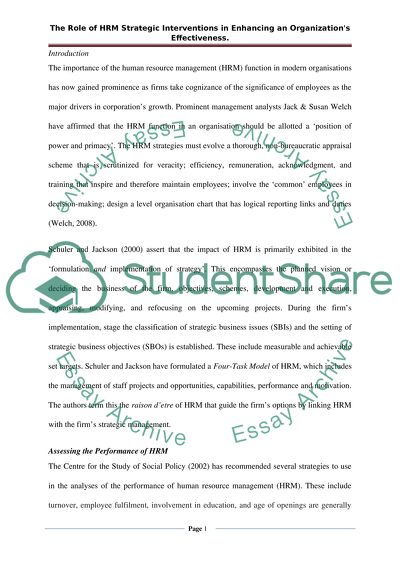Cite this document
(“H.R.M) Critically assess the view that HRm strategic interventions or Essay”, n.d.)
H.R.M) Critically assess the view that HRm strategic interventions or Essay. Retrieved from https://studentshare.org/miscellaneous/1561539-hrm-critically-assess-the-view-that-hrm-strategic-interventions-or-functions-ie-recruitment-selection-appraisal-performancework-force-diversitytraining-development-career-planning-etc-will-improve-an-organizations-effectiveness
H.R.M) Critically assess the view that HRm strategic interventions or Essay. Retrieved from https://studentshare.org/miscellaneous/1561539-hrm-critically-assess-the-view-that-hrm-strategic-interventions-or-functions-ie-recruitment-selection-appraisal-performancework-force-diversitytraining-development-career-planning-etc-will-improve-an-organizations-effectiveness
(H.R.M) Critically Assess the View That HRm Strategic Interventions or Essay)
H.R.M) Critically Assess the View That HRm Strategic Interventions or Essay. https://studentshare.org/miscellaneous/1561539-hrm-critically-assess-the-view-that-hrm-strategic-interventions-or-functions-ie-recruitment-selection-appraisal-performancework-force-diversitytraining-development-career-planning-etc-will-improve-an-organizations-effectiveness.
H.R.M) Critically Assess the View That HRm Strategic Interventions or Essay. https://studentshare.org/miscellaneous/1561539-hrm-critically-assess-the-view-that-hrm-strategic-interventions-or-functions-ie-recruitment-selection-appraisal-performancework-force-diversitytraining-development-career-planning-etc-will-improve-an-organizations-effectiveness.
“H.R.M) Critically Assess the View That HRm Strategic Interventions or Essay”, n.d. https://studentshare.org/miscellaneous/1561539-hrm-critically-assess-the-view-that-hrm-strategic-interventions-or-functions-ie-recruitment-selection-appraisal-performancework-force-diversitytraining-development-career-planning-etc-will-improve-an-organizations-effectiveness.


